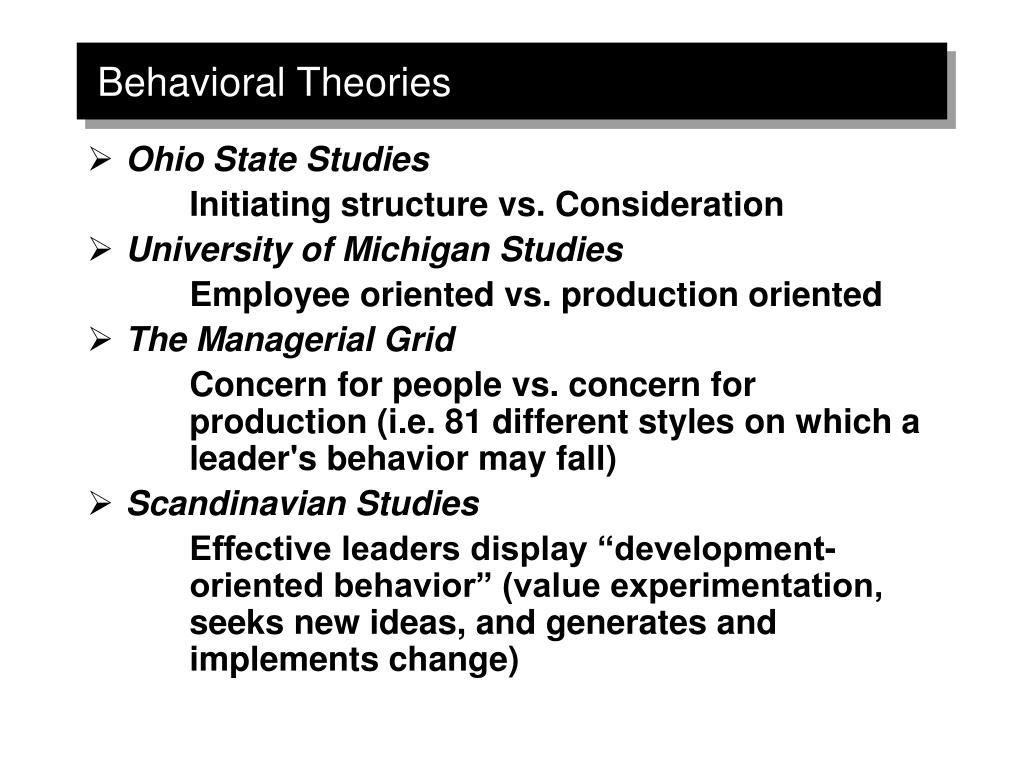
Servant leadership Servant leadership is the theory that denotes that for one to be an effective and efficient leader, he or she must first be a servant. (2003), "Gender and leadership? Leadership and gender? A journey through the landscape of theories", Leadership & Organization Development Journal, Vol. Some of the leadership theories that apply in the healthcare context include transformational leadership, servant leadership, and shared leadership theory. The inescapable reality is that, within the senior ranks of corporate north America (and elsewhere), women remain conspicuous by their absence. 6 Leadership Theories: The Traits of Different Leadership Styles. Question three: The assessment that a woman’s leadership style is less effective than a man’s is not fact‐based but rather driven, by socialization, to a perception that certainly persists. Tannenbaum and Schmidt suggest that leadership style is a. In this process, the following theories of leadership have evolved: The Great Man Theory: Thomas Carlyle proposed the Great Man Theory in the 1840s, and it merely believes that leadership. Question two: No, women’s styles are not at all likely to be less effective in fact, they are more effective within the context of team‐based, consensually driven organizational structures that are more prevalent in today’s world. The main leadership theories present two basic approaches - task-centred and employee-centred. People who have the necessary skills to be effective. From the standpoint of trait theory, nature is responsible for creating leaders. You could even say this is an extension of the classic nature vs.


In other words, effective leadership is not the exclusive domain of either gender and both can learn from the other. Aside from the behavioral or style theory of leadership, there are several other theories of leadership that focus on additional components of leaders. In some regards, the trait theory and the process theory of leadership stand on opposite ends of the leadership theory spectrum. The purpose of this article was to examine the following three questions: Are women’s leadership styles truly different from men’s? Are these styles less likely to be effective? Is the determination of women’s effectiveness as a leaders fact‐based or a perception that has become a reality? Conclusions revealed: Question one: Yes, women’s leadership style is, at this point, different from men’s but men can learn from and adopt “women’s” style and use it effectively as well.


 0 kommentar(er)
0 kommentar(er)
